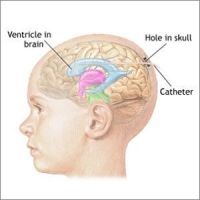Prehospital hypoxia and hypotension have been known to increase mortality in the setting of traumatic brain injury (TBI). Results of a new study showed that while hypoxia and hypotension increased mortality by four- and threefold respectively, the combination of these two factors further increased mortality by 14-fold.
The largest previous study had suggested that the combination of conditions did not make a significant difference compared to either condition alone, said Dr. Daniel W. Spaite, Professor and Chair of the Department of Emergency Medicine, and Director of Emergency Medical Services (EMS) Research, College of Medicine, University of Arizona, Tucson (AZ, USA).
"It turns out that after severity adjustment, it's really dramatic; the combination gets to really high mortality rates," said Dr. Spaite, referring to the results from a preliminary analysis of the Excellence in Prehospital Injury Care (EPIC) study. The findings were presented at the American Heart Association (AHA) 2014 Scientific Sessions Resuscitation Science Symposium.
The findings support current EMS TBI treatment guidelines that call for the prevention and treatment of both hypoxia and hypotension, which to date have not been widely implemented in the US, Dr. Spaite noted. "So the first thing to say is, do what the guidelines say."
The EPIC trial is now moving into a prospective phase, during which researchers are examining whether implementing the guidelines will affect outcomes, Dr. Spaite added. "That's not the focus of today — this is just the retrospective — but it's very powerful data showing that if you don't prevent these things, the likelihood of the patient dying goes way up."
It has been known that hypoxia and hypotension occurring during prehospital emergency management of TBI reduce survival in these patients, but little is known about the effect of the combination of these factors. Studies that have investigated this have had only a small number of cases with both hypoxia and hypotension — the largest to date included only 14 such cases, Dr. Spaite said.
"The advantage of the EPIC study is we believe we're going to have about 27,000 patients in the study," he explained. "(This) gives us a huge retrospective cohort to look at this question, and the linkage rate is very high, so we have the prehospital data now in over 10,000 retrospective patients."
For this analysis, the researchers reviewed all moderate-to-severe TBI cases, defined as type 1 using the Centers for Disease Control and Prevention Barell matrix, enrolled in the EPIC trial. EPIC is a statewide "before-and-after" study that looked at implementation of TBI treatment guidelines between January 2008 and June 2012.
The relationship between mortality and hypoxia, defined as oxygen saturation less than 90 percent, and/or hypotension, defined as systolic blood pressure less than 90 mm Hg, was examined with crude and multivariate odds ratios, adjusted for important confounders including age, sex, ethnicity, payment source, and accounting for clustering by trauma centre.
Also, the researchers explored what might be the ideal blood pressure and found that in this analysis it was about 144 mm Hg, Dr. Spaite said. "Well, everybody on the planet before this has been thinking maybe it's 90, maybe 95, maybe 100, but nobody has been thinking 130s, 140s is where we want them to be."
It is not enough to change practices based on these retrospective data, he noted, but it may be something of a "wake-up call" that the best threshold may be higher than currently thought and will be the subject of some of the prospective analyses in EPIC.
Source: Medscape.com
Image Credit: Military Families Learning Network/US Department of Defense
The largest previous study had suggested that the combination of conditions did not make a significant difference compared to either condition alone, said Dr. Daniel W. Spaite, Professor and Chair of the Department of Emergency Medicine, and Director of Emergency Medical Services (EMS) Research, College of Medicine, University of Arizona, Tucson (AZ, USA).
"It turns out that after severity adjustment, it's really dramatic; the combination gets to really high mortality rates," said Dr. Spaite, referring to the results from a preliminary analysis of the Excellence in Prehospital Injury Care (EPIC) study. The findings were presented at the American Heart Association (AHA) 2014 Scientific Sessions Resuscitation Science Symposium.
The findings support current EMS TBI treatment guidelines that call for the prevention and treatment of both hypoxia and hypotension, which to date have not been widely implemented in the US, Dr. Spaite noted. "So the first thing to say is, do what the guidelines say."
The EPIC trial is now moving into a prospective phase, during which researchers are examining whether implementing the guidelines will affect outcomes, Dr. Spaite added. "That's not the focus of today — this is just the retrospective — but it's very powerful data showing that if you don't prevent these things, the likelihood of the patient dying goes way up."
It has been known that hypoxia and hypotension occurring during prehospital emergency management of TBI reduce survival in these patients, but little is known about the effect of the combination of these factors. Studies that have investigated this have had only a small number of cases with both hypoxia and hypotension — the largest to date included only 14 such cases, Dr. Spaite said.
"The advantage of the EPIC study is we believe we're going to have about 27,000 patients in the study," he explained. "(This) gives us a huge retrospective cohort to look at this question, and the linkage rate is very high, so we have the prehospital data now in over 10,000 retrospective patients."
For this analysis, the researchers reviewed all moderate-to-severe TBI cases, defined as type 1 using the Centers for Disease Control and Prevention Barell matrix, enrolled in the EPIC trial. EPIC is a statewide "before-and-after" study that looked at implementation of TBI treatment guidelines between January 2008 and June 2012.
The relationship between mortality and hypoxia, defined as oxygen saturation less than 90 percent, and/or hypotension, defined as systolic blood pressure less than 90 mm Hg, was examined with crude and multivariate odds ratios, adjusted for important confounders including age, sex, ethnicity, payment source, and accounting for clustering by trauma centre.
Also, the researchers explored what might be the ideal blood pressure and found that in this analysis it was about 144 mm Hg, Dr. Spaite said. "Well, everybody on the planet before this has been thinking maybe it's 90, maybe 95, maybe 100, but nobody has been thinking 130s, 140s is where we want them to be."
It is not enough to change practices based on these retrospective data, he noted, but it may be something of a "wake-up call" that the best threshold may be higher than currently thought and will be the subject of some of the prospective analyses in EPIC.
Source: Medscape.com
Image Credit: Military Families Learning Network/US Department of Defense
Latest Articles
TBI, hypoxia, brain injury, hypotension, EPIC
Prehospital hypoxia and hypotension have been known to increase mortality in the setting of traumatic brain injury (TBI). Results of a new study showed tha...



























